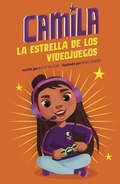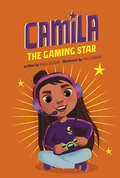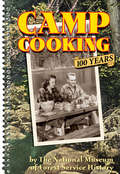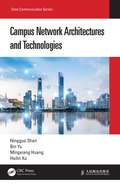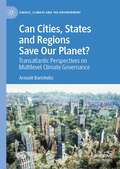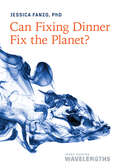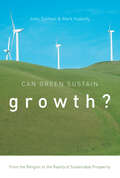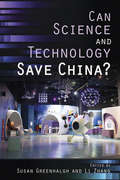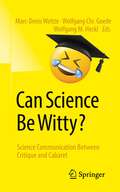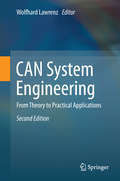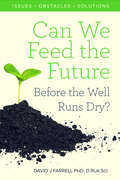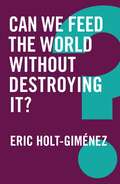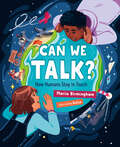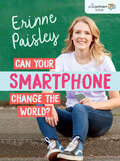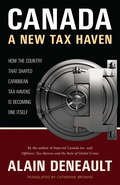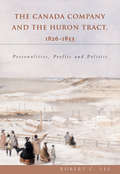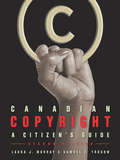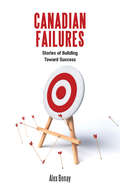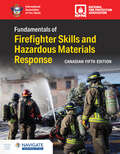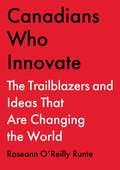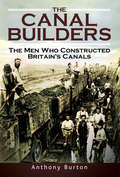- Table View
- List View
Camila la estrella de los videojuegos (Camila la estrella)
by Alicia SalazarCamila quiere comprar nuevos equipos de video, y cuando se entera de un torneo de videojuegos, ve la oportunidad de ganar mucho dinero. Sus hermanos la ayudan a perfeccionar su técnica de juego, pero ¿será suficiente para ganar y convertirse en la estrella de los videojuegos?
Camila the Gaming Star (Camila the Star)
by Alicia SalazarCamila wants to buy some new video equipment, so when she hears about a video game tournament, she sees her chance to win big money. Her brother and sister help her perfect her gaming skills, but will it be enough to make her into a winning video game star?
Camp Cooking: 100 Years
by The National Museum of Forest Service HistoryPhotos, anecdotes, and outdoor-cooking recipes celebrating the history of the U.S. Forest Service. Dedicated protectors of our national forests and grasslands, Forest Service agents live much of their lives outdoors, and that includes mealtimes. In decades past, rangers&’ wives prepared meals with limited resources as they accompanied their husbands in the field, often supplementing cooking with k-rations cooked over an open fire. In rustic and remote locations, delicious, time-tested creations were prepared and served, including Dutch Oven Beer Bread, Parmesan Mashed Potatoes, Pioneer Night Stew, and Creamy Pumpkin Pie. Here, the National Museum of Forest Service History presents a unique cookbook that celebrates decades of camp cooking by countless Forest Service agents in the field. Featuring legendary recipes for Dutch oven meals, open-fire dishes, and other tasty outdoor specialties used daily in the early days of the Forest Service, Camp Cooking also includes photos and anecdotes that tell the whole history of these brave and hardy individuals.
Campus Network Architectures and Technologies (Data Communication Series)
by Ningguo Shen Bin Yu Mingxiang Huang Hailin XuCampus Network Architectures and Technologies begins by describing the service challenges facing campus networks, and then details the intent-driven campus network architectures and technologies of Huawei Cloud Campus Solution. After reading this book, you will have a comprehensive understanding of next-generation campus network solutions, technical implementations, planning, design, and other know-how. Leveraging Huawei’s years of technical expertise and practices in the campus network field, this book systematically describes the use of technical solutions such as virtualization, big data, AI, and SDN in campus networks. You will be able to reconstruct campus networks quickly and efficiently utilizing this informative description. Additionally, this book provides detailed suggestions for campus network design and deployment based on Huawei's extensive project implementation experience, assisting with the construction of automated and intelligent campus networks required to cope with challenges. This is a practical, informative, and easy-to-understand guide for learning about and designing campus networks. It is intended for network planning engineers, network technical support engineers, network administrators, and enthusiasts of campus network technologies. Authors Ningguo Shen is Chief Architect for Huawei’s campus network solutions. He has approximately 20 years' experience in campus network product and solution design, as well as a wealth of expertise in network planning and design. Mr. Shen previously served as a system engineer for the campus switch, data center switch, and WLAN product lines, and led the design of Huawei’s intent-driven campus network solution. Bin Yu is an Architect for Huawei's campus network solutions. He has 12 years’ experience in campus network product and solution design, as well as extensive expertise in network planning and design and network engineering project implementation. Mr. Yu once led the design of multiple features across various campus network solutions. Mingxiang Huang is a Documentation Engineer for Huawei’s campus network solutions. He has three years of technical service experience, and four years of expertise in developing campus network product documentation. Mr. Huang was previously in charge of writing manuals for Huawei router and switch products. He has authored many popular technical series, including Be an OSPF Expert, Insight into Routing Policies, and Story behind Default Routes. Hailin Xu is a Documentation Engineer for Huawei’s campus network solutions. He has two years of marketing experience in smart campus solutions, and six years of expertise in developing network products and solution documentation. Extremely familiar with Huawei's campus network products and solutions, Mr. Xu was previously in charge of writing manuals for Huawei routers, switches, and campus network solutions. In addition, he has participated in smart campus marketing projects within such sectors as education, government, and real estate.
Can America Remain Committed?: U.s. Security Horizons In The 1990s
by David G. HaglundThe twelve months that spanned the period between the early springtimes of 1991 and 1992 may well turn out to constitute the most important year for American foreign and security policy in half a century. Encasing the dawning of a new and different security era, like macabre parentheses, were two columns of black smoke-that of 1991 over the newly liberated Kuwait, and that of 1992 over the embattled district of South-Central Los Angeles. Within these acrid temporal brackets unfolded a set of developments of utmost significance for American foreign and security policy and for the very meaning of the country's external commitments.
Can Cities, States and Regions Save Our Planet?: Transatlantic Perspectives on Multilevel Climate Governance (Energy, Climate and the Environment)
by Arnault BarichellaThis book examines the potential for cities, states and regions to take decisive action on climate change at the local level. Local action constitutes an essential component of global efforts to keep temperatures below the 2°C Paris Agreement threshold. Focusing on three green municipal leaders - New York, Boston and Paris - this volume examines their multilevel interactions with higher governance echelons in the United States and France. Even though these countries are located on different continents, similar patterns emerge on both sides of the Atlantic. This book explores the key role of municipalities and sub-state entities in shaping the climate policy agenda vis-à-vis national governments in the US and France. It argues that inadequate articulation of multilevel governance may jeopardize efforts to limit global temperature increase below the 2°C threshold by the end of the century.
Can Fixing Dinner Fix the Planet? (Johns Hopkins Wavelengths)
by Jessica FanzoHow can consumers, nations, and international organizations work together to improve food systems before our planet loses its ability to sustain itself and its people?Do we have the right to eat wrongly?As the world's agricultural, environmental, and nutritional needs intersect—and often collide—how can consumers, nations, and international organizations work together to reverse the damage by changing how we make, distribute, and purchase food? Can such changes in practice and policy reverse the trajectories of the biggest global crises impacting our world: the burden of chronic diseases, the consequences of climate change, and the systemic economic and social inequities that exist within and among nations?Can Fixing Dinner Fix the Planet? is a clarion call for both individual consumers and those who shape our planet's food and environmental policies that:• describes the often destructive path that foods take from farms and seas through their processing, distribution, marketing, purchasing and waste management sites• explores the complex web of factors impacting our ability to simultaneously meet nutritional needs, sustain biodiversity and protect the environment• raises readers' food and environmental literacy through an engaging narrative about Fanzo's research on five continents along with the work of other inspiring global experts who are providing solutions to these crises• empowers readers to contribute to immediate and long-term changes by informing their decisions in restaurants, grocery stores, farmers markets, and kitchens
Can Green Sustain Growth?: From the Religion to the Reality of Sustainable Prosperity
by Mark Huberty John ZysmanGreen growth has proven to be politically popular, but economically elusive. Can Green Sustain Growth? asks how we can move from theoretical support to implementation, and argues that this leap will require radical experimentation. But systemic change is costly, and a sweeping shift cannot be accomplished without political support, not to mention large-scale cooperation between business and government. Insightful and timely, this book brings together eight original, international case studies to consider what we can learn from the implementation of green growth strategies to date. This analysis reveals that coalitions for green experimentation emerge and survive when they link climate solutions to specific problems with near-term benefits that appeal to both environmental and industrial interests. Based on these findings, the volume delivers concrete policy recommendations for the next steps in the necessary shift towards sustainable prosperity.
Can Science and Technology Save China?
by Susan Greenhalgh Li ZhangCan Science and Technology Save China? assesses the intimate connections between science and society in China, offering an in-depth look at how an array of sciences and technologies are being made, how they are interfacing with society, and with what effects.Focusing on critical domains of daily life, the chapters explore how scientists, technicians, surgeons, therapists, and other experts create practical knowledges and innovations, as well as how ordinary people take them up as they pursue the good life. Editors Greenhalgh and Zhang offer a rare, up-close view of the politics of Chinese science-making, showing how everyday logics, practices, and ethics of science, medicine, and technology are profoundly reshaping contemporary China. By foregrounding the notion of "governing through science," and the contested role of science and technology as instruments of change, this timely book addresses important questions regarding what counts as science in China, what science and technology can do to transform China, as well as their limits and unintended consequences.
Can Science Be Witty?: Science Communication Between Critique and Cabaret
by Marc-Denis Weitze Wolfgang Chr. Goede Wolfgang M. Heckl"Can science be funny?" takes a close look at an element of modern science communication that is as innovative as it is promising for the future: comedy!Readers are guided through vividly presented academic theory as well as exciting hands-on and best practice examples from renowned practitioners and cabaret artists:- What do sheep's cheese and car tires have in common?- Can laughter break down walls?- How does "Die Anstalt" work?- How does magic create knowledge?- Is there humor in museums?- When a Dalmatian comes to the cash register- Three steps to humor- Serving suggestion for the Holy Spirit- dictatorship of stupidity- And much more!But it's not all just funny. Comedy can also take away some of the biting sharpness of criticism, making it digestible, even palatable, for the addressees."Can Science Be Funny?" navigates between criticism and cabaret, tackling comedy in various guises from different perspectives.22 contributions show how the results of science, research and technology can be brought to the general public in new ways. In particular, they also demonstrate how humour can be used as a critical and questioning force - valuable for all types of communication and helpful so that they come across more shrewdly in the future.
CAN System Engineering: From Theory to Practical Applications
by Wolfhard LawrenzThis book addresses the various challenges and open questions relating to CAN communication networks. Opening with a short introduction into the fundamentals of CAN, the book then examines the problems and solutions for the physical layout of networks, including EMC issues and topology layout. Additionally, a discussion of quality issues with a particular focus on test techniques is presented. Each chapter features a collection of illuminating insights and detailed technical information supplied by a selection of internationally-regarded experts from industry and academia. Features: presents thorough coverage of architectures, implementations and application of CAN transceiver, data link layer and so-called higher layer software; explains CAN EMC characteristics and countermeasures, as well as how to design CAN networks; demonstrates how to practically apply and test CAN systems; includes examples of real networks from diverse applications in automotive engineering, avionics, and home heating technology.
Can We Feed The Future Before The Well Runs Dry?
by David Farrell PhD D.Rur.Sci.Mankind is at a crossroads. We need to increase food production by 70% by 2050 in the face of climate change, increased water and fertiliser demand, declining arable land area, environmental degradation and an affluent and rapidly-growing population with inequality rising quickly. But what about the one billion now living in poverty; many with insufficient money to buy food and go to bed hungry every night yet we waste sufficient food that would feed these and millions more. But are we as individuals prepared to put our shoulder to the wheel and give the poor the opportunity to improve their lot. Or will we continue on the well-worn pathway in an increasingly selfish consumer society rapidly using up our diminishing resources?
Can We Feed the World Without Destroying It? (Global Futures)
by Eric Holt-GimenezNearly a third of the world’s population suffers from hunger or malnutrition. Feeding them – and the projected population of 10 billion people by 2050 – has become a high-profile challenge for states, philanthropists, and even the Fortune 500. This has unleashed a steady march of initiatives to double food production within a generation. But will doing so tax the resources of our planet beyond its capacity? <p><p> In this sobering essay, scholar-practitioner Eric Holt-Giménez argues that the ecological impact of doubling food production would be socially and environmentally catastrophic and would not feed the poor. We have the technology, resources, and expertise to feed everyone. What is needed is a thorough transformation of the global food regime – one that increases equity while producing food and reversing agriculture’s environmental impacts.
Can We Talk?: How Humans Stay in Touch (Orca Timeline #8)
by Maria BirminghamLet’s talk. We don’t think much about our ability to communicate. We simply have a conversation, make a call, send a text or use sign language to share information. But how was human language invented? And when? Communication is a way for us to express ourselves, share information and maintain relationships with others. Hundreds of years ago, humans needed to communicate to hunt, farm and defend against threats. Today, thanks to satellites and computers, we can communicate in an instant with just about anyone on Earth. Can We Talk? examines the evolution of human communication—from the theories about how spoken language began to the technological advances that connect the world now. The epub edition of this title is fully accessible.
Can You Hear a Shout in Space?
by Melvin Berger Gilda BergerImages and stories about space exploration surround kids, fueling their curiosity about what lies beyond Earth¹s atmosphere. In this easy-to-understand book, kids will learn how a rocket works, how a satellite stays in orbit, how a space station is built, what it's like to be an astronaut, and much, much more.
Can You Trust a Tomato in January? The Hidden Life of Groceries and Other Secrets of the Supermarket Revealed at Last
by Vince StatenFrom the Book jacket: Here is America's music drenched, fluorescent-lit, coupon-clipped glory. In this fascinating expedition through the world of polished linoleum-tiled aisles, find out why peanut butter doesn't stick to the roof of your mouth anymore, discover the lost connection between graham crackers and sex, and learn what's really in the mysterious white stuff they call Cool Whip. Join author Vince Staten in his humorous and revealing journey through the secret life of our favorite supermarket items, as he uncovers the hidden histories and fascinating folklore behind the foods we take for granted. The results are truly amazing and reveal the answers to such questions as: Which has more lemon in it, Lemon Pledge or Country Time Lemonade? What is Spam-and why is it so darn popular? What happened to the vanilla in Nabisco Nilla Wafers? Who thought of putting American cheese in an aerosol can, and is it really cheese, anyway? "Absolutely fascinating proof that food isn't food like we used to know it. -Ann DeFrange, The Sunday Oklahoman "There are thousands of bite-sized factoids in this book, and if you're someone who occasionally looks at what's on your plate, chances are you'll be interested, too Delicious." -Geoffrey Stokes, The Boston Sunday Globe VINCE STATEN, author of Ol' Diz, Unauthorized America, and Real Barbecue, lives in Prospect, Kentucky, and hits the local Winn-Dixie supermarket 3.4 times per week.
Can Your Smartphone Change the World? (PopActivism #1)
by Erinne PaisleyCan Your Smartphone Change the World? is a twenty-first-century guide for anyone who has access to a smartphone. This how-to manual looks at specific ways you can create social change through the tap of a screen. Filled with examples of successful hashtag campaigns, viral videos and new socially conscious apps, the book provides practical advice for using your smartphone as a tool for social justice. This is the first book in the PopActivism series. Can Your Outfit Change the World? comes out in spring 2018 and Can Your Conversations Change the World? in fall 2018.
Canada: A New Tax Haven
by Alain Deneault Catherine BrowneIn Canada: A New Tax Haven, Alain Deneault traces Canada's relationship with Commonwealth Caribbean nations back through the last half of the twentieth century, arguing that the involvement of Canadian financiers in establishing and maintaining Caribbean tax havens has predisposed Canada to become a tax haven itself - a metamorphosis well under way.Canada was linked to Caribbean nations long before they became tax havens. In the 1950s, an ex-governor of Canada's central bank attempted to establish a low taxation regime in Jamaica. In the 1960s, the transformation of the Bahamas into a tax haven characterized by impenetrable banking secrecy was shaped by a minister of finance who sat on the Royal Bank of Canada's board of directors. A Calgary lawyer and former Conservative Party heavyweight drew up the clauses that transformed the Cayman Islands into an opaque offshore jurisdiction. For years, Canadian politicians have debated annexing tax havens such as the Turks and Caicos Islands, making them part of Canadian territory. Canada has signed a free-trade agreement with Panama and is currently seeking a wider agreement with countries in CARICOM, the Caribbean economic community. And, notably, Canada currently shares its seat at the World Bank and the International Monetary Fund with a group of Caribbean tax havens.These exercises in fostering fiscal and banking leniency have predisposed Canada to become one of the most attractive tax havens to foreign interests. Not only does Canada offer one of the lowest corporate tax rates in the world, but a number of loopholes encourage companies to relocate to Canada as if it were Barbados or Bermuda.Canada: A New Tax Haven is an attempt to analyze the situation and address its implications for Canadians.
The Canada Company and the Huron Tract, 1826-1853: Personalities, Profits and Politics
by Robert C. LeeThe Canada Company was responsible for the opening and settling of over two million acres of land in Upper Canada. Author Robert C. Lee focuses his attention on the extensive parcel of land on the shores of Lake Huron that became known as the Huron Tract. His comprehensive research explores the underlying forces leading to the formation of the Company, the intriguing mix of people charged with responsibilities for the Company and the overall impact of its operations, leading to its present-day legacy. The politics of the day, coupled with diverse and colourful personalities – such as John Galt, Tiger Dunlop, William Allan, Thomas Mercer Jones, Frederick Widder, Sir Peregrine Maitland, Bishop Macdonnell and Bishop Strachan – introduce an interesting blend of vision, intrigue, mischief and day-to-day survival strategies that make for compelling reading. Add to this the shareholders perspective of the Company versus the settlers perspective and you have a fascinating glimpse of pioneer conditions. Included are descriptions of early towns such as Guelph and Goderich, as well as background on the Huron Tract township names. "Robert Lee’s outstanding book brings to life the unusual assemblage of characters who were instrumental in the development of Upper Canada’s largest private settlement scheme – the Huron Tract. Their relationships with each other, and especially with the Canada Company for which many of them worked, make a great story." – Lutzen Riedstra, Stratford-Perth Archivist "Robert Lee has vividly recreated the personalities and the political intrigues that were part of the Canada Company’s operation – the largest one of its type in Ontario’s history. The most comprehensive work to date on this fascinating era, this book is eminently readable and a must-have for history lovers. – Ron Brown, author of Ghost Towns of Ontario
Canadian Copyright: A Citizen’s Guide
by Laura J. Murray Samuel E. TrosowIn the age of easily downloadable culture, messages about copyright are ubiquitous. If you’re an artist, consumer, or teacher, copyright is likely a part of your everyday life. Completely updated, this revised edition of Canadian Copyright parses the Copyright Act and explains current Canadian copyright law to ordinary Canadians in accessible language, using recent examples and legal cases.
Canadian Failures: Stories of Building Toward Success
by Alex BenayThe Hill Times: Best Books of 2017 Successful Canadians write about failure, and how it got them where they are today. What does it mean to fail? To some of the most successful Canadians, it was a rite of passage, a stepping stone to greater things, or even a brilliant source of inspiration. Olympic golds, successful businesses, pioneering medical advances — all came about after a series of missteps and countless attempts. Canadian Failures gathers ten experts from the private, public, and not-for-profit sectors and academia, all of whom have grappled with failures and success throughout their lives. Their powerful argument: that Canada, and Canadians, must be willing to learn from failure if we hope to succeed. With Chapters By … astronaut Robert Thirsk Olympic gold medalist, wrestler Erica Wiebe Chair of OpenText and of the National Research Council, Tom Jenkins co-founder of the Just for Laughs comedy festival, Andy Nulman … and others at the top of their fields.
Canadian Fundamentals of Firefighter Skills and Hazardous Materials Response
by Jones & Bartlett LearningFundamentals of Firefighter Skills and Hazardous Materials Response, Canadian Fifth Edition with Navigate Advantage Access is specifically designed for Canadian fire services that are transitioning their training to NFPA compliance or wish to align their training with recognized best practices.
Canadians in Space: The Forever Frontier
by John MeladyIn 1984, Marc Garneau became Canadas first astronaut and a national hero. Since then, seven of his fellow citizens have followed in his footsteps, many more than once. This book was written as a twenty-fifth anniversary tribute to these brave men and women who defied tremendous odds, risked their lives, and soared from Earth on sheets of flame.
Canadians Who Innovate: The Trailblazers and Ideas That Are Changing the World
by Roseann O'Reilly RunteProfiles of some of the most inventive and creative Canadians and the ideas that are making Canada a leading nation in innovation.From saving lives to saving harvests... From discovering ancient diamonds to identifying the first exo-planet... From driverless cars to quantum computers... From Nobel laureates to your next-door neighbor... This book offers uplifting stories of innovative Canadians. Canadians Who Innovate includes two Nobel laureates, an astronaut, extraordinary business leaders, the godfathers of artificial intelligence, and top quantum experts, including the inventor of what may be the next quantum computer. It features profiles of the first director of engineering at Google, who is now working on nuclear fusion; a medical researcher who communicates on TikTok about the efficacy and potential for RNA vaccine technology; and a PhD in nuclear physics who has twice won the Scotiabank Giller Prize. Meet the linguist who works with Indigenous people to make online dictionaries, an internationally consulted specialist on migration, an agri-tech investor, a world specialist on permafrost, and the expert in systems and number theory who has a way to fix health care. And don&’t forget the engineer who grew human cells on apples, a feat that is leading to the creation of replacement organs that do not require donors—not to be confused with the aerospace technology developer who created a tethering system to clean up space debris and a 3-D printer that prints biological tissue. Featuring brilliant thinkers from coast to coast to coast, and others from around the world who now call Canada home, Canadians Who Innovate paints a promising picture of a cleaner, healthier, more innovative future for us all.
The Canal Builders: The Men Who Constructed Britain's Canals
by Anthony BurtonCanal Builders is a classic history book for anyone interested in the development of Britain's canal system. The book, which was first published in the 1970s, is now republished here in a new fifth edition. It takes the reader from the middle of the eighteenth century, to the start of the railway age in the early nineteenth century. Anthony Burton has revised and improved the original text, using new material that he has found in archives since it was first published, and has added many extra illustrations. This is the remarkable story of the many groups of people who were responsible for building Britain's canal system. There were industrialists such as Josiah Wedgwood, who promoted canals to help his own industry, and speculators, financed the projects in the hope of a good return. The work was planned by engineers, some of whom, such as James Brindley and Thomas Telford, have become famous, while others have remained virtually unknown but still did magnificent work. This is also the story of the great, anonymous army of men who actually did the work the navvies. This was the first book ever to study the lives of these labourers in detail. Altogether it is an epic story of how the transport route that made the industrial revolution possible was built.'Well planned and well written There is no better introduction to the early canal age.' The EconomistLinks End Links Author End Author
